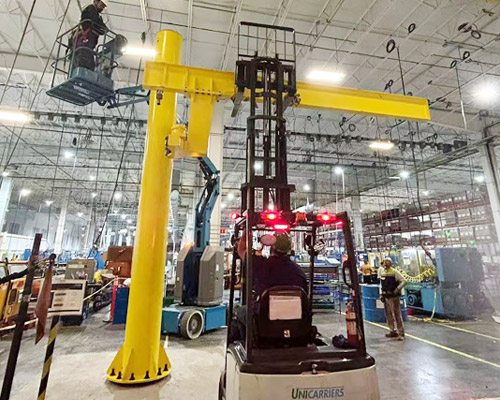When it comes to lifting heavy objects in an industrial environment, gantry cranes and jib cranes are two popular choices. Both types of cranes are essential for efficiently moving materials in factories, warehouses and construction sites. Understanding the differences between gantry cranes and jib cranes can help businesses make informed decisions about which type of crane best suits their needs.
Gantry cranes are multifunctional lifting equipment commonly used in industrial environments. These cranes are equipped with horizontal beams supported by two legs, allowing them to move along a track or track system. Gantry cranes are ideal for lifting and transporting heavy objects over large areas, making them ideal for applications such as loading and unloading goods in warehouses and moving materials in manufacturing facilities.
A jib crane is an industrial crane that has a horizontal jib or boom mounted on a vertical mast or wall. These cranes are designed to provide a high degree of maneuverability and precision, making them suitable for tasks that require lifting and positioning loads in specific areas. Jib cranes are commonly used in workshops, assembly lines and maintenance facilities to lift heavy machinery and equipment with ease.
The main difference between gantry cranes and jib cranes is their design and functionality. Gantry cranes are known for their ability to cover large work areas and handle heavy loads, while jib cranes are valued for their flexibility and ability to access small or restricted spaces. Both types of cranes offer unique advantages, and the choice between them ultimately depends on the specific requirements of the application.

(gantry crane)

(jib crane)
Post time: Apr-23-2024







